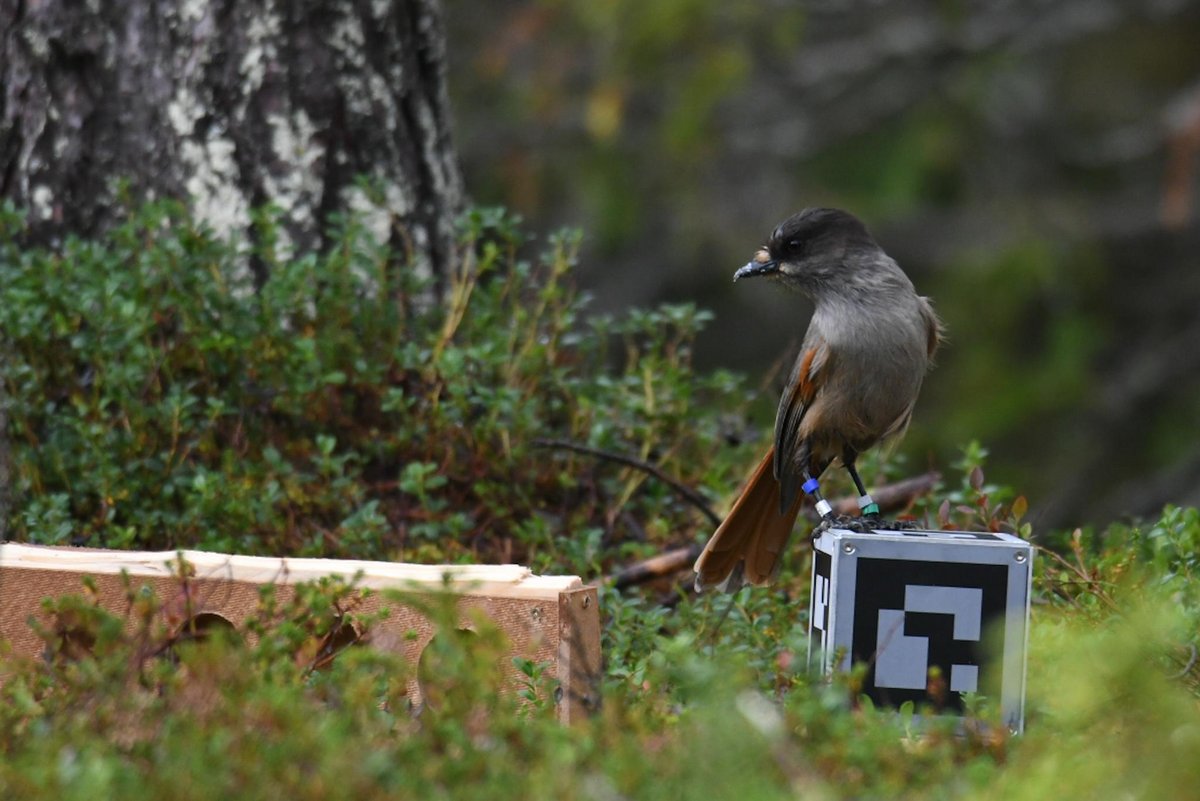
3D posture tracking and social learning in Siberian Jays
Social learning is a wide-spread phenomenon in the animal world, and occurs in diverse taxa including insects, birds, primates (see Whiten, 2021). It provides an alternative pathway for behavioural traits to be inherited outside of genetic inheritance. However, while observations of social learning have increased in recent years, there is still a lack of study assessing the fine-scaled mechanisms that drives social transmission, and especially its fitness consequences. Following the success of a pilot field season supported by a previous small budget to establish 3D tracking methods of Siberian jays in the wild, we hope to apply these methodological advances in computer vision to the study the attention of Siberian jays in a social learning context. This will be an extension of the previous work to support the next field season (Aug-Sept 2024) to run a social learning experiment with 3D tracking.
Siberian jays form stable social groups that besides a breeding pair can include both related and unrelated non-breeders, which make it a unique study system to study the evolution and maintenance of cooperation and group living. Previous work showed differences in individual’s attention to social learning opportunities based on kinship when exposed to a model predator, which can contribute to increased long term fitness of individuals (Griesser and Suzuki, 2016). Here, we designed 2 two-action tasks for the jays to solve in situ, and started training adults within family groups during the pilot field season last year. Next field season, we plan to run social learning experiments when naïve juveniles are present in the groups. We hope to quantify 1. social learning ability: whether individual variation in attention use during social learning contexts lead to increased learning speed and 2. individual learning ability: whether individual variation in cognition and learning ability is present. We then hope to relate these two factors with overwinter survival, as a fitness proxy. With a multi-camera setup that was established in the previous field season, we will be able to do 3-D posture reconstruction of individuals during social learning, allowing fine-scaled measurement of gaze and behaviours.
References:
Griesser, M. and Suzuki, T.N., 2016. Kinship modulates the attention of naïve individuals to the mobbing behaviour of role models. Animal Behaviour, 112, pp.83-91.
Whiten, A., 2021. The burgeoning reach of animal culture. Science 372, eabe6514. doi.org/10.1126/science.abe6514.
